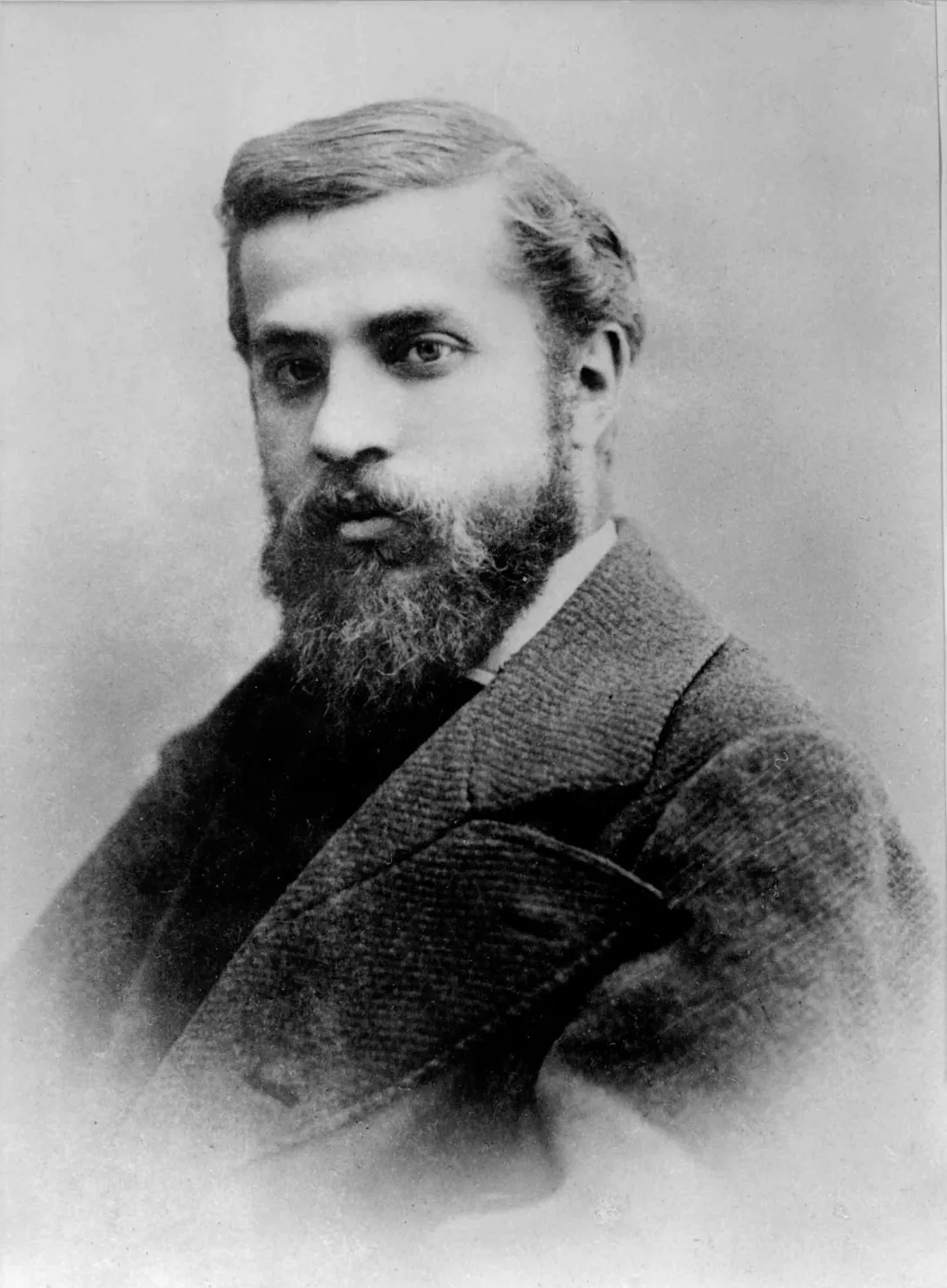Antoni Gaudí i Cornet was a Catalan architect internationally recognized as the leading exponent of modernism and creator of a unique architectural legacy.
Antoni Gaudí was born on June 25, 1852, in Reus according to some biographies and in Riudoms according to others, a small town near Reus where his family spent the summer. He came from a family of copper-smiths, which allowed the young Antoni Gaudí to acquire a special skill for handling space and volume while helping his father and grandfather in the family workshop.
His ease at conceiving spaces and transforming materials flourished, leading him to become the genius of three-dimensional creation that he would later prove to be.
Gaudí was a child of delicate health, which is why he was forced to spend long periods of rest at the Mas de Riudoms, where he would spend hours upon hours contemplating and absorbing the secrets of nature, which he considered his great teacher and transmitter of the highest knowledge as the supreme work of the Creator.
In nature, Gaudí found the essence and meaning of architecture. It was about following its own patterns, always respecting its laws in search of the most beautiful, sustainable, and effective work possible. For all these reasons, Gaudí claimed: “Originality consists in returning to the origin”.
In 1870, he moved to Barcelona to pursue his studies in architecture while also taking on various jobs that allowed him to pay for his studies. He was an irregular student, but already showed signs of genius that opened the doors for him to collaborate with some of his professors.
When he finished his studies in 1878 at the School of Architecture, the director, Elies Rogent, stated: “I don’t know if we’ve given the title to a madman or a genius, time will tell”. It was undeniable that the ideas of that young man were not merely a repetition of what had been done until that moment, nor would they leave anyone indifferent.
Once he obtained his degree, Gaudí set up his own office in the Call Street in Barcelona, where, with great dedication, he started his unmistakable architectural legacy, much of which is now part of UNESCO World Heritage.
In 1878, by chance, the artist met Eusebi Güell, a promoter of national industry with a pronounced taste for the arts, and their paths crossed, resulting in one of the most productive relationships of friendship and patronage in history. The relationship was not only that of client-architect, but it evolved into a mutual admiration bond, weaving a friendship that gave the architect the opportunity to begin a full professional journey in which he could develop all of his artistic qualities.
Beyond his relationship with Güell, Gaudí received numerous commissions and proposed countless projects. Many of them, fortunately, became a reality, but some others remained on paper. During his mature years, the masterpieces followed one after the other: Casa Batlló, Casa Milà, Park Güell and Crypt of the Colònia Güell.
In a progressive withdrawal from his social life, Gaudí, who in his youth had frequented theaters, concerts, and gatherings, went from being a young dandy with gourmet tastes to neglecting his personal appearance, eating frugally, and distancing himself from social life while dedicating himself with more fervor to a mystical and religious feeling, focusing exclusively on the Sagrada Família.
Antoni Gaudí died on June 10, 1926, after being struck by a tram while heading, as he did every evening, towards the Sagrada Família from the Sant Felip Neri church. After the impact, he lost consciousness, and no one suspected that the elderly, disheveled man was the famous architect. He was taken to the Hospital de la Santa Creu, where he was later recognized by the priest of the Sagrada Família.
His funeral took place two days later at the Sagrada Família, after a massive public ceremony. Many Barcelonians took to the streets to say their final goodbyes to Gaudí, the most universally recognized architect the city had ever seen.
